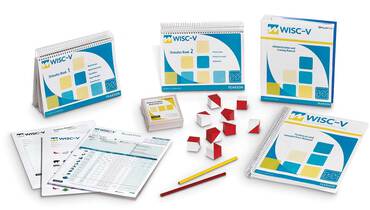Wechsler Intelligence Scale for Children® Fifth Edition (WISC®-V) is an intelligence test that measures a child’s intellectual ability and 5 cognitive domains that impact performance. Guidance on using this test in your telepractice. 
Wechsler Intelligence Scale for Children - Fifth UK Edition
WISC-V UK
Wechsler Intelligence Scale for Children® Fifth Edition (WISC®-V) is an intelligence test that measures a child’s intellectual ability and 5 cognitive domains that impact performance. Guidance on using this test in your telepractice.‹ View all tests and materials
WISC-V UK Q-global Stimulus Book 1 (Digital)
9780749173234
Qualification Level
C
Once ordered, the digital asset is accessible by logging into Q-global and visiting the Q-global Resource Library. It is a view-only digital file.
£220.50